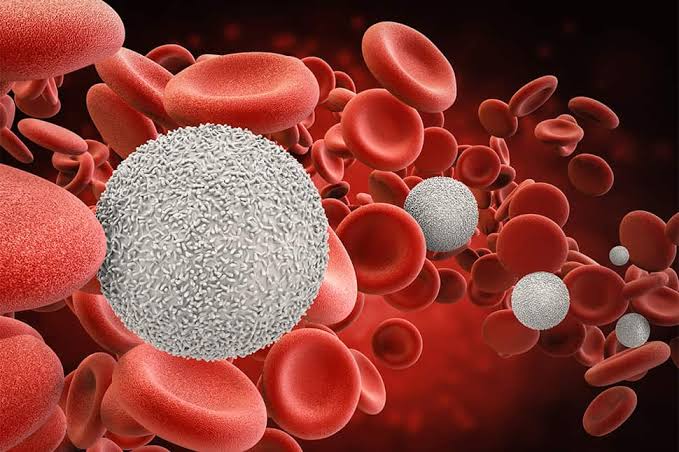 Cancer occurs when body tissues develop the ability to undergo rapid and uncontrolled growth. Cancer of the blood known as leukaemia affects the blood forming tissues and blood cells. This causes abnormal blood cells which are unable to carry out their normal functions to be rapidly produced.
Cancer occurs when body tissues develop the ability to undergo rapid and uncontrolled growth. Cancer of the blood known as leukaemia affects the blood forming tissues and blood cells. This causes abnormal blood cells which are unable to carry out their normal functions to be rapidly produced.
In leukaemia, the white blood cells are mostly affected. Leukaemia can be classified into four categories depending on how fast the cancer develops and the type of blood cell affected. Acute leukaemia occurs very fast. The blood cells produced are immature and are unable to carry out their normal functions. It can be very fatal.
Chronic leukaemia occurs over a long period of time. In this case there are other blood cells that can carry out normal functions so symptoms develop slowly and may not be detected early.
Lymphocytic or lymphoblastic leukaemia affects the cells that specifically form leukocytes. Leukocytes are a type of white blood cells that provides immunity. Myelogenous or myeloid leukaemia affects the cells that form red blood cells, blood platelets and other types of white blood cells.
Based on these classifications, there are four major types of leukaemia;
Acute lymphocytic leukaemia (ALL)
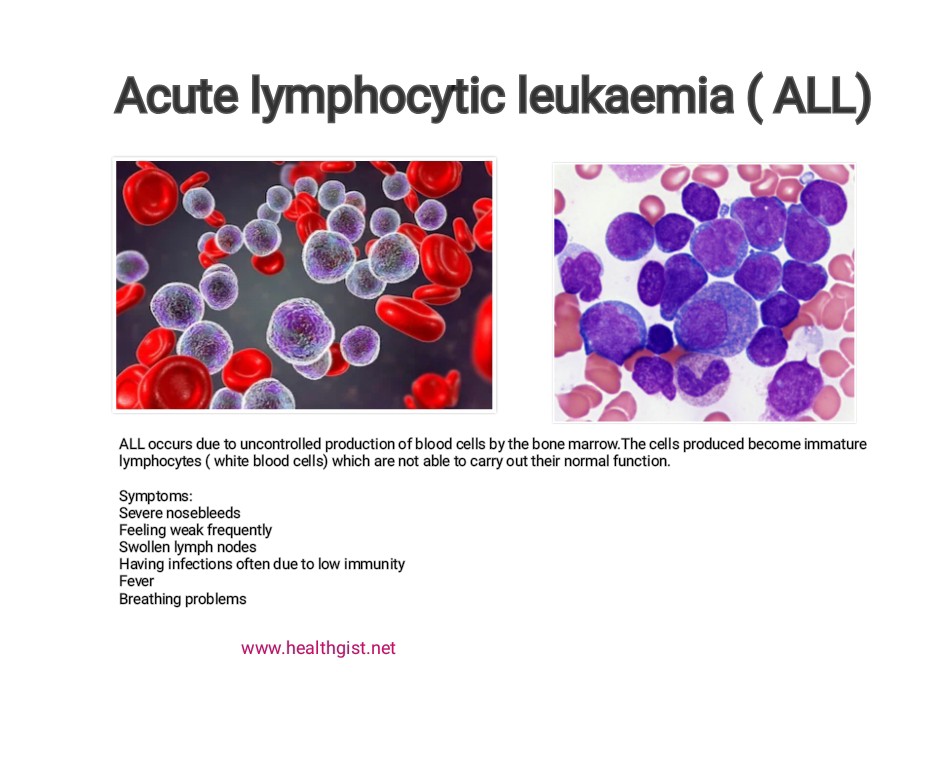 This is the most common type of leukaemia. Mostly, children are affected but adults above the age of 65 can be affected too.
This is the most common type of leukaemia. Mostly, children are affected but adults above the age of 65 can be affected too.
Acute myelogenous Leukaemia (AML)
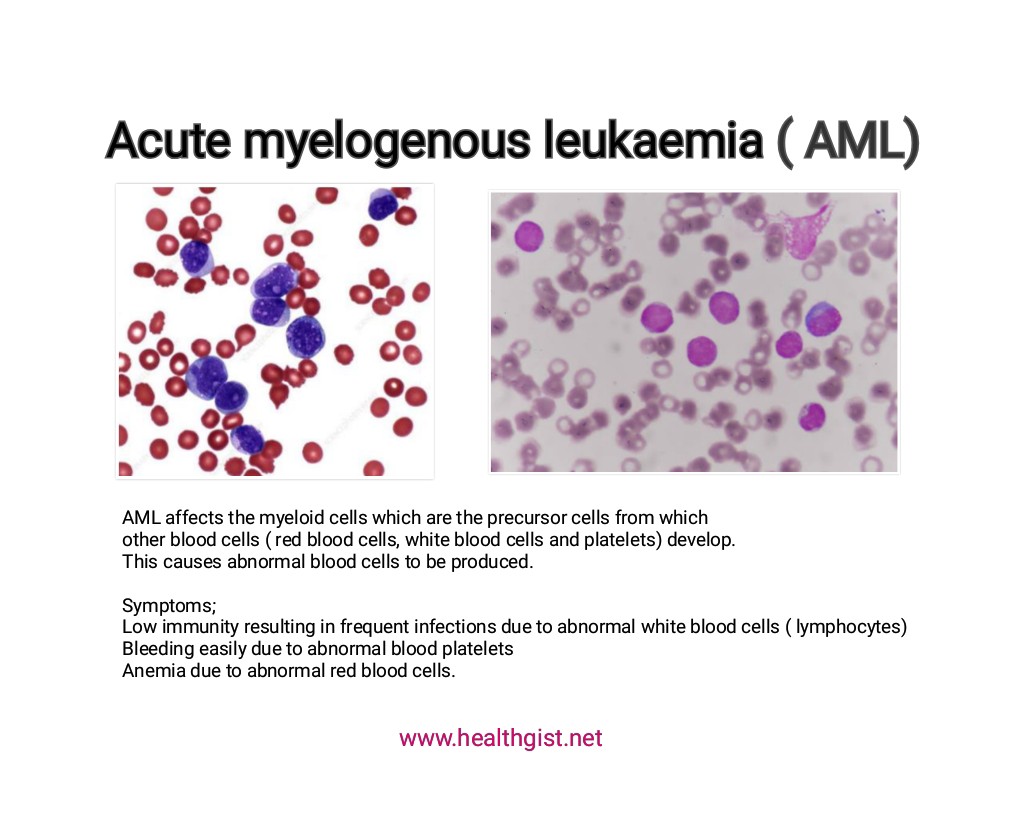 It occurs more in adults than children. Males are mostly affected
It occurs more in adults than children. Males are mostly affected
Chronic lymphocytic leukaemia (CLL)
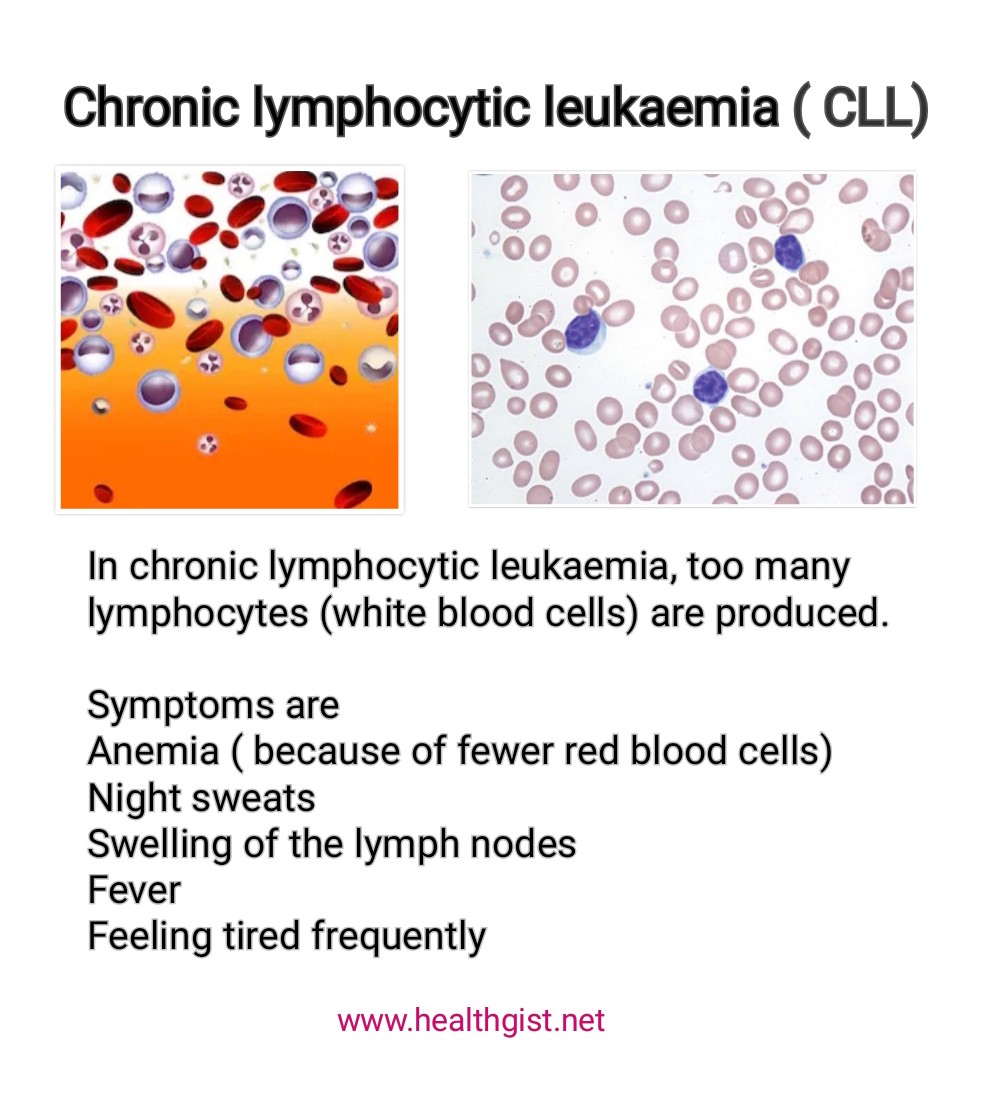 It occurs in adults usually above the age of 55. It occurs in children in very rare cases. It can be asymptomatic for long periods.
It occurs in adults usually above the age of 55. It occurs in children in very rare cases. It can be asymptomatic for long periods.
Chronic myelogenous leukaemia (CML)
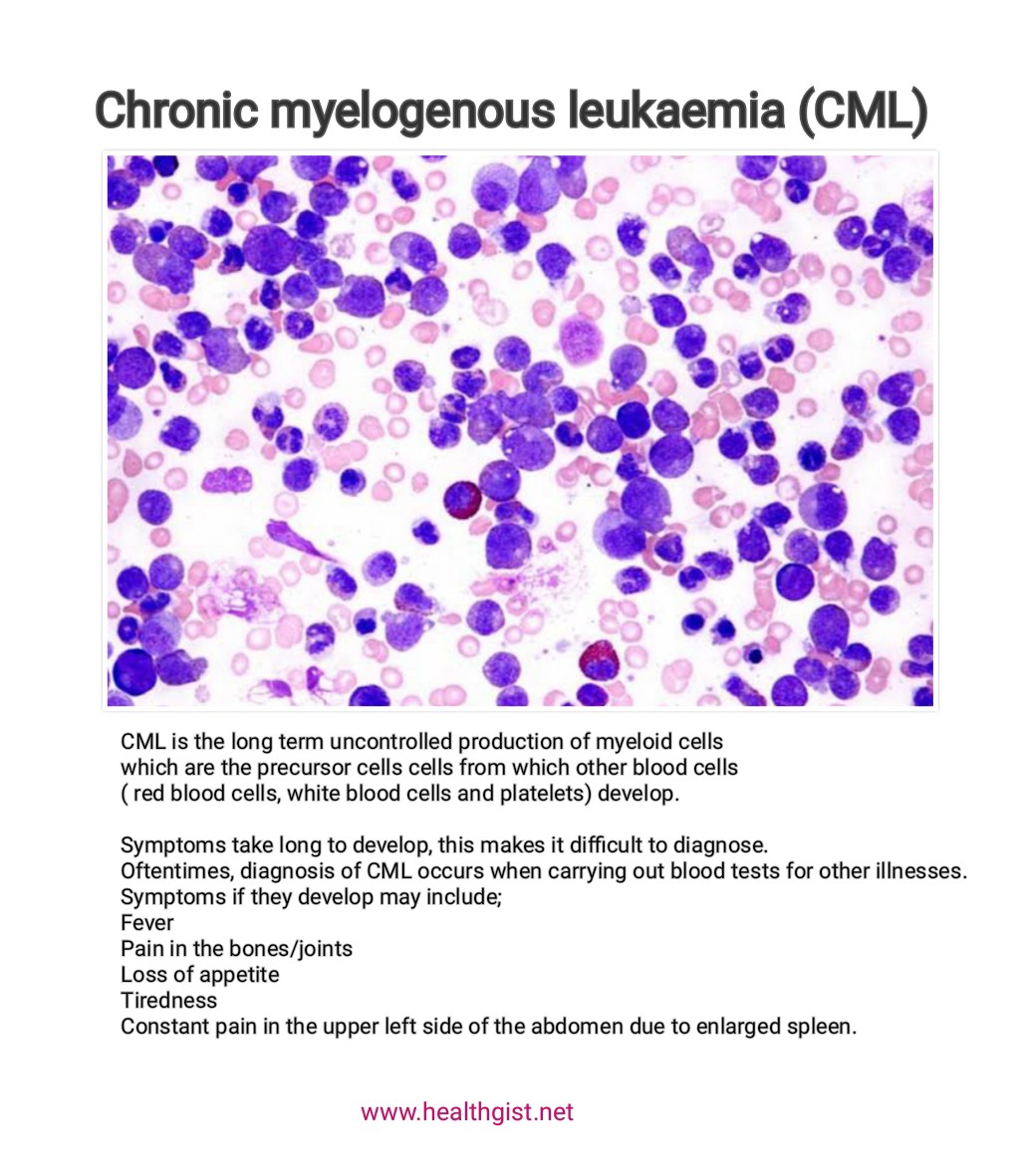 It mostly affects adults although it can sometimes be found in children. Symptoms take time to show, but once they do the cancer progresses rapidly.
It mostly affects adults although it can sometimes be found in children. Symptoms take time to show, but once they do the cancer progresses rapidly.
Apart from these major four types, there are other rare types like hairy cell leukaemia, Adult T- cell leukaemia, T-cell prolymphocytic leukaemia, clonal eosinophilias and large granular lymphocytic leukaemia.
Causes
The main cause is unknown but there are certain risk factors which includes; smoking, previous cancer treatment using radiation therapy and chemotherapy, exposure to radiation and radioactive substances, family history of leukaemia, genetic disorders like down’s syndrome.
Symptoms
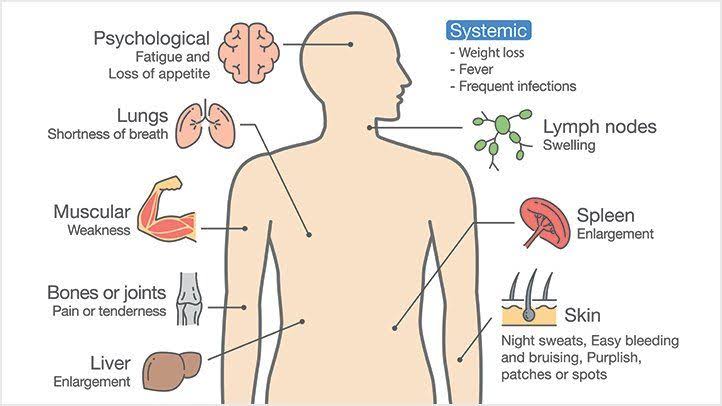 – Weight loss
– Weight loss
– Fever
– Pale skin
– Easy bruising with excessive bleeding
– Frequent infections due to decreased immunity
– Fatigue
– Enlarged liver and spleen due to the rapid production of blood cells.
– Seizure or coma
Treatment
After diagnosis has been done, treatment can be carried out based on the type and extent of the cancer. Treatment includes;
– Bone marrow transplant ( used to replace the affected blood cells with new ones)
– Radiation therapy
– Chemotherapy

Oyewole Ibukun is currently a Medical student of Olabisi Onabanjo University. She has a passion for seeking knowledge with a creative, detail oriented and analytical mindset.
